Resource Management Software | Employee Performance Tracking Software
Blog
Task Management Meets Profitability: Unveiling the Link Between Workflow and ROI

In today’s competitive business environment, companies are constantly looking for ways to improve efficiency and profitability. One of the most overlooked areas that significantly impacts both is task management. Effective task management isn’t just about keeping teams organized; it directly influences how resources are allocated, deadlines are met, and ultimately, how much return on investment (ROI) is achieved.
This blog explores the vital connection between workflow optimization through task management and its impact on profitability, offering insights into how businesses can leverage this link to drive success.
Understanding the Basics: What is Task Management?
Task management refers to the process of planning, tracking, and executing tasks within a project or workflow. It involves organizing tasks by priority, assigning them to the right individuals, and monitoring progress to ensure timely completion.
Key Features of Modern Task Management Systems:
- Task prioritization.
- Progress tracking and analytics.
- Collaboration tools.
- Automation of repetitive tasks.
- Resource allocation.
While task management may seem like an administrative function, its impact ripples through every layer of an organization, influencing productivity, efficiency, and profitability.
How Task Management Influences ROI
ROI is a critical metric for any business, measuring the profitability of an investment. Task management systems can improve ROI by streamlining workflows, reducing inefficiencies, and enabling better decision-making. Here’s how:
- Increased Productivity: Efficient task management ensures that teams focus on high-priority tasks without distractions. By eliminating bottlenecks and automating routine processes, task management systems help employees accomplish more in less time.
Example: A company using automated reminders and progress dashboards can reduce delays and ensure that projects stay on track, leading to quicker delivery times and higher client satisfaction.
- Better Resource Allocation: Poorly allocated resources can drain profitability. Task management systems provide visibility into workload distribution, helping managers assign tasks to team members with the right skills and availability. This reduces overburdening and prevents underutilization of resources.
Impact on ROI:
- Reduced overtime costs.
- Improved employee morale and retention.
- Maximized output from available resources.
- Minimized Errors and Rework: Manual processes often lead to mistakes that require time and money to fix. Task management systems incorporate features like automated workflows and checklists to minimize errors, ensuring tasks are completed correctly the first time.
Real-World Benefit: A marketing agency using a task management system for campaign planning avoids missed deadlines and incorrect deliverables, saving costs associated with rework.
- Enhanced Collaboration: Miscommunication can result in wasted time and resources. Task management tools enable seamless collaboration by centralizing information, ensuring all team members have access to real-time updates and shared goals.
Features Driving Collaboration:
- Centralized dashboards for task visibility.
- Real-time chat and file-sharing capabilities.
- Transparent progress tracking.
This improved collaboration reduces unnecessary delays and aligns team efforts with organizational objectives, driving better profitability.
Key Elements of Task Management That Boost ROI
- Automation: Automating repetitive tasks such as status updates, deadline reminders, and progress reporting saves valuable time. Automation ensures consistency and allows employees to focus on strategic activities that contribute to profitability.
- Analytics and Reporting: Advanced task management systems provide insights into performance metrics such as task completion rates, resource utilization, and time spent on projects. These analytics enable data-driven decisions that optimize workflows and enhance ROI.
Example: A construction company analyzing task timelines can identify inefficiencies and adjust resource allocation to meet deadlines without incurring additional costs.
- Scalability: Scalable task management systems grow with your business, accommodating larger teams and complex workflows without compromising efficiency. This scalability supports consistent profitability even as demands increase.
Workflow Optimization: The Missing Piece for Many Businesses
While many organizations invest in task management tools, they fail to integrate these systems into their broader workflows. To truly unlock the link between task management and profitability, companies must focus on workflow optimization.
Steps to Optimize Workflow for Maximum ROI
- Identify Bottlenecks: Use task management analytics to pinpoint delays and inefficiencies in your workflow. Address these pain points to streamline processes.
- Prioritize Tasks: Align tasks with business objectives to ensure resources are allocated to high-value activities.
- Integrate Tools: Connect task management systems with other business tools like CRM and ERP software for a unified approach to resource planning and execution.
- Monitor and Adapt: Continuously track performance metrics and make necessary adjustments to workflows for sustained improvement.
Case Studies: Task Management Driving Profitability
- A Tech Startup Scaling Operations: A growing tech startup implemented a task management system to streamline its product development process. By prioritizing tasks, automating status updates, and tracking project milestones, the company reduced its time-to-market by 20%. This efficiency improvement directly translated into higher revenues and customer retention.
- A Marketing Agency Enhancing Collaboration: A marketing agency struggling with missed deadlines adopted a collaborative task management tool. With shared dashboards and centralized communication, the team reduced miscommunication and improved project delivery timelines, boosting client satisfaction and profitability.
The Future of Task Management and ROI
As businesses evolve, task management systems are incorporating advanced technologies like artificial intelligence (AI) and machine learning to further enhance efficiency and profitability.
Emerging Trends:
- Predictive Analytics: AI-powered tools predict project risks and resource needs, enabling proactive decision-making.
- Integration with Remote Work Tools: Cloud-based task management platforms support distributed teams, ensuring productivity across geographies.
- Focus on Employee Experience: User-friendly interfaces and gamification features improve employee engagement, leading to higher productivity and better ROI.
Choosing the Right Task Management System for Your Business
To fully leverage the connection between task management and profitability, it’s essential to choose a system tailored to your organization’s needs. Look for features like:
- Customizable dashboards.
- Integration capabilities with existing tools.
- Real-time analytics and reporting.
- Scalability for future growth.
Conclusion
The link between task management and profitability is undeniable. By investing in a robust task management system and optimizing workflows, businesses can achieve significant gains in productivity, resource efficiency, and overall ROI.
In a world where margins are tight, and competition is fierce, effective task management isn’t just a tool—it’s a strategic advantage. By turning workflow chaos into structured processes, organizations can unlock their full potential and position themselves for long-term success.
Call to Action:
Ready to transform your workflow and boost profitability? Explore task management solutions that align with your business goals. Contact us today for a demo!

